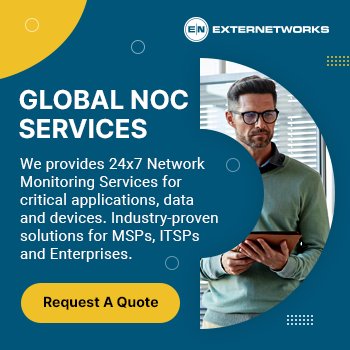IT Support Survival Guide: Overcoming Frequent Challenges

Are you a business owner or manager looking for ways to minimize IT support challenges? Do you want effective solutions to common IT issues such as security, connectivity, and system maintenance?
Every business needs an IT infrastructure that is reliable, efficient, and secure. However, sometimes, even the best-laid plans go differently than expected, and issues can arise. Issues can range from minor hiccups to major catastrophes, making it difficult for companies to manage their IT systems.
The role of IT support in addressing challenges in technology: IT support is an essential part of any organization’s technology infrastructure. IT support personnel are responsible for providing technical assistance to users, troubleshooting hardware and software issues, and ensuring that the organization’s systems remain secure and up-to-date.
However, IT support personnel often face various challenges in their day-to-day work. These challenges can range from user errors to hardware and software malfunctions.
This article provides a survival guide on overcoming the common IT support challenges and will also suggest how organizations can create an effective IT support plan to prevent or quickly respond to any potential issue.
Hardware and Software Issues
Hardware and software are two different things, but they work together to make the systems work properly. The hardware consists of any physical components such as processors and hard drives, while software includes programs installed on the machine. However, hardware and software can malfunction or corrupt due to user errors or malware attacks.
There are a variety of issues that can arise from hardware or software malfunctions that can range from minor inconveniences to major catastrophes. This article will discuss some of the most common hardware and software problems you could encounter with your computer, along with possible solutions for each issue.
Common Hardware Problems
Faulty Devices: Faulty devices can cause various issues, such as slow performance or complete system failure. You should check for hardware errors and replace faulty components to resolve this issue. Additionally, you should regularly clean your computer’s components to prevent dust buildup.
Connectivity Issues: Connectivity issues can occur when there is a problem with the network or hardware. To resolve this issue, you should check the cables, connections, and router settings. Additionally, you should ensure that all devices are compatible with each other before connecting them.
Common Software Problems
Compatibility Issues: Compatibility issues occur when software is not designed to work with a computer’s hardware or operating system. To resolve this issue, you should ensure that all software and hardware are compatible before installing them. Additionally, you can use virtualization technology to run incompatible programs on your computer.
System Crashes: System crashes can be caused by various factors, including hardware and software issues, viruses, and user errors. To prevent system crashes, you should regularly update your operating system and other software, install antivirus programs, and back up your data.
Viruses: Viruses can cause severe damage to your computer if not detected and removed in time. To protect your computer from viruses, you should install an antivirus program and keep it updated. Additionally, you should be careful when downloading files from the internet and avoid clicking on suspicious links.
Solutions For Hardware And Software Issues
Regular Maintenance and Updates: Regular maintenance and updates are essential for keeping your computer running smoothly. You should regularly check for hardware or software errors and update all programs to the latest version. Additionally, you should back up your data in case of a system failure.
Backups: Backing up your data is important in case of a system failure or virus attack. You should create regular backups of your data and store them in a secure location. Additionally, you should use cloud storage to store your backups in an emergency.
User Education: Educating users on how to use their computers properly is essential for preventing hardware and software issues. You should provide users with tutorials and instructions on using their computers safely and securely. Additionally, remind users to update their software and back up their data regularly.
Professional Assistance: If you cannot resolve hardware or software issues independently, you should seek professional assistance. You can contact a local IT support team to help resolve any technical issues. Additionally, you can use online resources such as forums and tutorials to find solutions to common problems.
Troubleshooting: Troubleshooting is an important part of resolving hardware and software issues. You should use diagnostic tools to identify the source of the problem and then take steps to resolve it. Additionally, you should be familiar with common error messages and their solutions to resolve any issues quickly.
Cybersecurity Threats
Cybersecurity threats are a growing concern for businesses of all sizes. Malware, ransomware, and phishing attacks can cause significant damage to an organization’s data and reputation. Small businesses are particularly vulnerable to these threats due to limited resources and a lack of security expertise.
Cybercriminals target small businesses because they often have weak security measures. As a result, small businesses are at risk of data breaches, ransomware attacks, phishing scams, and other malicious activities. These threats can cause significant damage to an organization’s data and reputation, leading to lost customers, decreased revenue, and legal liabilities.
Solutions for preventing and addressing cybersecurity threats
Fortunately, there are several steps that small businesses can take to protect themselves from cybersecurity threats. Implementing strong passwords, using antivirus software, and conducting regular security audits are all essential steps for preventing and addressing cybersecurity threats. Additionally, businesses should ensure that their employees are trained to recognize and respond to potential cyber threats.
Businesses should also consider investing in a comprehensive cybersecurity solution that can provide additional protection against malicious actors. Such solutions can include firewalls, intrusion detection systems, and data loss prevention tools. Additionally, businesses should ensure that their networks are regularly monitored for suspicious activity and that any vulnerabilities are addressed quickly. Finally, businesses should have the plan to respond to a cybersecurity incident. This plan should include steps for notifying customers, restoring data, and taking legal action if necessary.
Communication Breakdowns
Communication breakdowns are one of the most common IT support challenges. Poor communication can lead to misunderstandings, delays in resolving issues, and a lack of trust between IT staff and users.
The challenges of effectively communicating IT support needs and solutions
This can be especially difficult when dealing with non-technical users who may need help understanding technical terminology or concepts. To address this challenge, IT support staff should strive to use language that is easy to understand and avoid jargon or technical terms whenever possible.
Providing timely support – When a user has an issue, they expect it to be resolved quickly. To ensure that support is provided in a timely manner, IT staff should have a system in place for tracking and responding to requests. This could include setting up an automated ticketing system or using a help desk software solution.
Staying up-to-date on the latest technology and trends – To address this, IT staff should make sure they are regularly attending training sessions and seminars to stay informed on the latest developments in the industry. They should also be proactive in researching new technologies and solutions that could benefit their organization.
Managing multiple requests – With the increasing complexity of technology, IT support teams often have to manage many requests from different users. This can be difficult to keep track of and lead to delays in resolving issues.
The importance of clear and timely communication in IT support
Effective communication is critically important in any IT support operation. With clear and timely communication, IT personnel may have the necessary information to troubleshoot problems or provide optimal solutions for their clients. Even a tiny miscommunication can drastically affect user productivity and customer satisfaction.
Implementing a system of clear and timely communication is essential to the success of any IT support team. By focusing on specific areas such as training and knowledge sharing, prompt feedback, and streamlining processes, organizations can build an efficient communication infrastructure that enables their staff to serve customers more effectively.
Solutions for improving communication in IT support
Establish a System for Tracking and Resolving Issues: A system to track and resolve IT support issues is essential for effective communication. This system should include an easy-to-use ticketing system with clear instructions on submitting tickets, assigning them to the appropriate team members, and tracking their progress. Additionally, having a centralized repository of frequently asked questions and solutions can help streamline the process of resolving common issues.
Provide User-Friendly Resources: To ensure that users are able to quickly and easily access the information they need, it is important to provide user-friendly resources such as tutorials, FAQs, and how-to guides. These should be easy to find and understand, so users can quickly get the help they need.
Regularly Train Employees on New Technologies and Procedures: In order to ensure that employees are up-to-date on the latest technologies and procedures, it is important to provide regular training sessions. This will help ensure that everyone is on the same page when it comes to resolving issues and providing users with the best possible support. Additionally, this can reduce the time spent on resolving issues, as employees will be more familiar with the tools and processes.
Limited Resources and Expertise
One of the biggest challenges for IT support teams is providing adequate service with limited resources and expertise. This can be especially difficult when dealing with complex technical issues or specialized needs. Many organizations cannot hire or retain qualified IT professionals due to budget constraints, leaving them with no choice but to rely on less experienced personnel. This can lead to a need for more knowledge and understanding about properly using and maintaining technology, resulting in costly mistakes and delays in resolving issues.
Another challenge is the need for adequate tools and resources. Many organizations cannot purchase or maintain the necessary hardware and software to properly support their IT infrastructure. This can lead to a lack of visibility into system performance, making it difficult to identify and address potential problems before they become major issues.
The benefits of outsourcing IT support for specialized needs
Providing effective IT support with limited resources and expertise can be daunting. Hiring in-house IT staff or purchasing expensive software and hardware can be prohibitive for many organizations. Fortunately, there are options for businesses that need specialized IT support without breaking the bank. Outsourcing IT support is one such option that can provide a cost-effective solution to this problem. Outsourcing IT support can provide organizations with access to a wide range of expertise and resources that would otherwise be unavailable. By working with an experienced provider, businesses can benefit from the latest technology, specialized knowledge, and cost-effective solutions. This can help them stay competitive in their industry while still providing effective IT support.
In addition to the cost savings associated with outsourcing IT support, businesses can also benefit from its flexibility. By working with an experienced provider, businesses can access a wide range of services and solutions tailored to their specific needs. This allows them to focus on their core business operations while ensuring that their IT systems are up-to-date and running smoothly. Furthermore, outsourcing IT support can help businesses reduce the risk of data loss or security breaches by providing access to the latest security protocols and technologies.
Overall, outsourcing IT support can be an excellent way for businesses to get specialized IT support without breaking the bank. By working with an experienced provider, businesses can benefit from cost savings, access to the latest technology, and tailored solutions that meet their specific needs. This can help them stay competitive while providing effective IT support with limited resources and expertise.
Solutions for addressing resource and expertise gaps in IT support
Partnering with a managed service provider is one of the most effective solutions for addressing resource and expertise gaps in IT support. Managed service providers can provide access to experienced professionals who can help troubleshoot problems, install new systems, and provide ongoing maintenance and support. Additionally, investing in training and development for IT support staff can help ensure that they are updated on the latest technologies and best practices. This can help them provide better service and quickly identify and resolve any issues.
Another solution for addressing resource and expertise gaps in IT support is to invest in automation. Automation can help streamline processes, reduce manual labor, and free up resources to address more complex issues. Automation can ensure tasks are completed quickly and accurately, reducing the need for additional staff or outside support. Investing in the right tools and technologies can help IT support teams work more efficiently and effectively.
Conclusion – Common IT support challenges can be difficult to manage, but with the right solutions in place, they can be overcome. By implementing proactive measures such as regular maintenance and monitoring and providing comprehensive training for users, organizations can ensure that their IT systems remain secure and reliable. Additionally, having a knowledgeable team of IT professionals on hand to provide timely assistance when needed is essential for resolving any issues that may arise. IT support challenges can be managed effectively and efficiently with the right strategies in place.
Small businesses rely heavily on their IT systems to run smoothly and efficiently. With proper maintenance and support, these systems can quickly become reliable and efficient, leading to costly downtime and lost productivity. By addressing common IT support challenges, small businesses can ensure that their systems run optimally and securely. This not only helps to reduce costs associated with downtime but also improves customer satisfaction by providing a reliable and secure experience. Additionally, addressing IT support challenges can help small businesses stay competitive in their respective markets by giving customers a reliable and secure platform for interacting with their businesses.
Why ExterNetworks – If you want to stay ahead of the competition, you must take advantage of the latest technological advancements. To achieve this, you need to hire a trusted IT support company to assist you in implementing these changes. An experienced IT support team can advise on implementing the necessary changes in your business. They can also monitor your network and servers to ensure everything is working correctly. With over 20+ years of experience serving the technology industry, we know what it takes to grow your business.
Contact us today to learn more about our services!
Also Read
The Impact of Remote Work on IT Support
Benefits of Having a Dedicated IT Support Team
Best practices for IT support in small businesses
The role of IT support in cybersecurity
The role of automation in IT support
The differences between in-house and outsourced IT support
How to Improve the Customer Experience in IT Support




